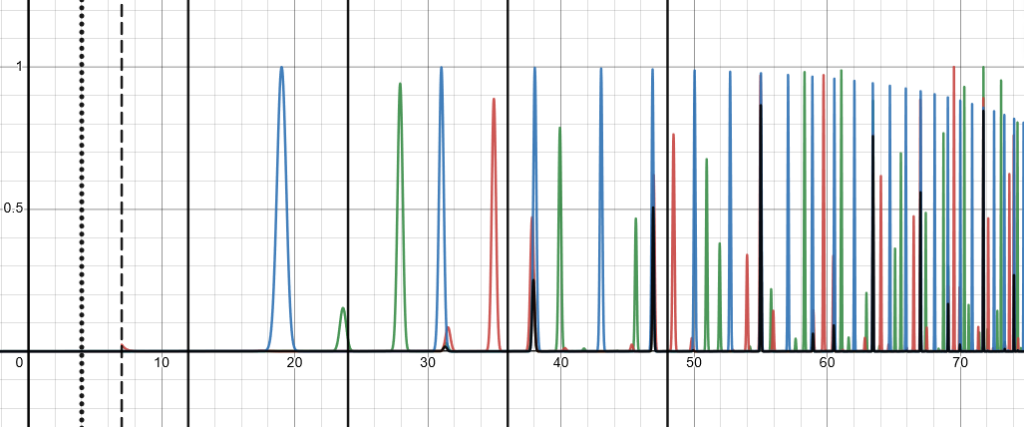This week, I discovered a nice little musical idea:
If you’re a musician, you may not find that particularly interesting, although, isn’t it unusually consonant? Let’s see what it is and where it comes from. Last time, we saw that in typical consonant chords, there are patterns in how the overtones of all three notes simultaneously overlap. In the cases of the sus2, sus4, and minor chords, the pattern is itself a harmonic series. This seems to indicate that the sounds of these chords each contain the sound of a related higher note.
| Chord | Position of related note relative to the root |
| Minor | two octaves and a fifth up (31 semitones) |
| Sus2 | three octaves and a major second up (38 semitones) |
| Sus4 | three octaves and a perfect fifth up (43 semitones) |
At my digital piano, I investigated how it sounds to play these chords and the related notes. To me, it does sound like a consonant relationship. I didn’t record any of that but I recommend trying it yourself if you are interested.
More interesting to me was what I saw above a major chord:

There are three almost evenly space tones of increasingly close overlap, at positions 38. 47, and 55. To make that more concrete, let’s choose a key. Above a C major chord, the related notes are D, B and G, which happen to be the notes of a G major chord. In the key of C, we call C major the One chord (I), and G major the Five chord (V). Moving from I to V is a standard way to create tension, and going back from V to I releases that tension, and is called a perfect cadence. But what we’ve found here is a that a Five chord played way high up should sound like it’s an aspect of the One chord. This suggested to me the existence of the smooth-sounding cadence you heard earlier.
